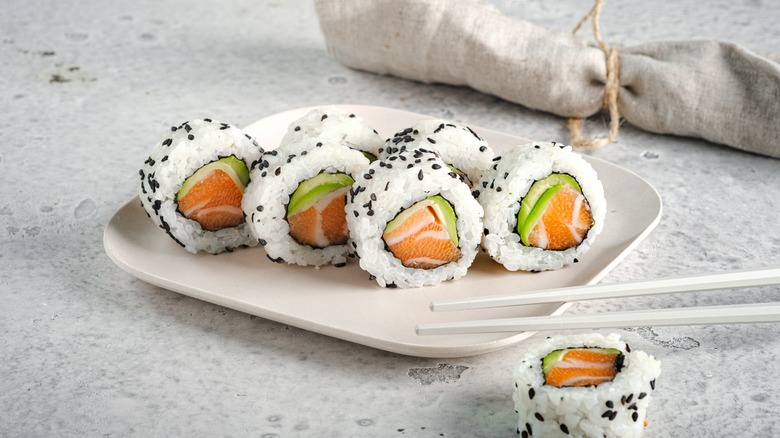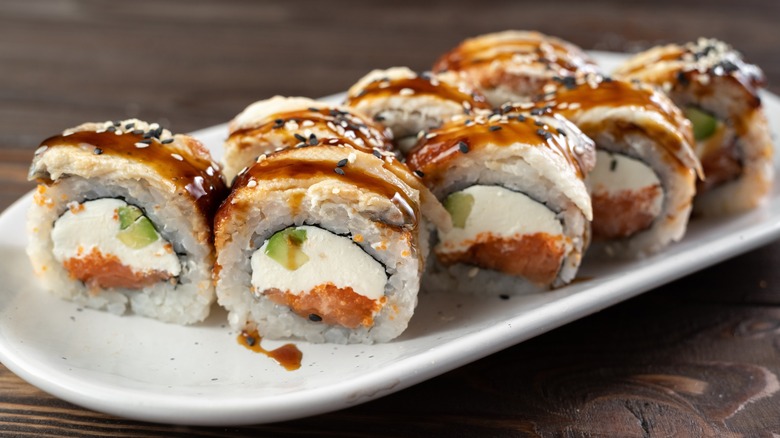The Easy Way To Tell If Your Sushi Rolls Are Fresh
While sushi is enjoyed by millions, there's a reason the CDC warns against eating it. That reason, of course, is the potential for food poisoning. According to Very Well Health, consuming raw seafood has to the potential to lead to infection by anisakis, vibrio, salmonella, listeria, or bacillus cereus, all of which can quickly turn serious and require professional treatment.
However, that certainly doesn't mean you should avoid all types of sushi. You can look at a few different aspects to determine whether or not the roll you've received is safe to eat. Per the FDA, some things to take note of include smell, color, and texture. So, if a piece of fish has a really bad smell or has some funky discoloration, you'd be better off throwing it away, the same you'd do to any other food that visibly appeared to be a bit off.
These warning signs are even more important when it comes to sushi you aren't preparing yourself or watching be made in front of you. Who's to say that your favorite all-you-can-eat sushi buffet isn't serving you old, bacteria-ridden spicy tuna? Fortunately, in addition to giving your fish the sniff test and a good, hard look, there's one other trick you can try.
Don't eat sushi if the fish feels mushy
If you happen to find yourself with a plate of questionable sushi, be it from a restaurant, a grocery store, or even a gas station (though we hope you would know better than to buy gas station sushi), be sure to run a few quick tests.
First, look at the color of the fish used in the sushi. Per Reader's Digest, if the fish has even a hint of gray or blue, it's not fresh. Do not eat it. Next, perform a sniff test. The fish -– and the sushi, for that matter –- should have a fishy smell, but a fresh one, not a rancid one. If it smells unappetizing, it probably is. Lastly, test the texture. Blogger and chef Timothy Woods told Eat This, Not That that an easy way to do this is by "gently pressing" your finger onto the fish. If it's softer than you'd expect, do not eat it.
Although every bite of sushi technically carries a risk, using these little tricks can help minimize your chance of getting sick from eating bad fish. As for bacterial contamination, all you can do is use your best judgment and stay on top of news about recalls.

